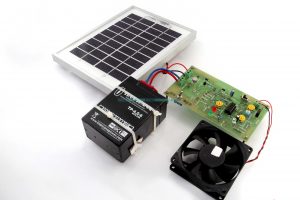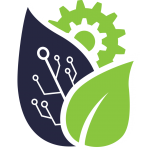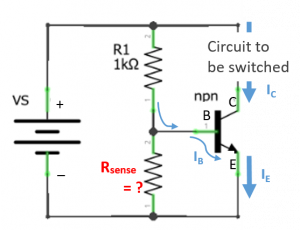Foundational Electronic Design & Renewable Generation and Storage
Sustainable Power Systems
Overview
 In this module, students learn the basics of renewable energy generation, electricity flow and storage in DC systems. The first workshop will introduce basic terminology, materials and concepts related to electricity and electrical circuit design. Next, participants will expand on this knowledge by designing, building and testing real-life circuits to manage a solar-powered project. In the third workshop, students will be challenged to construct a functional solar-powered lantern. Students are given a firm understanding of how to utilize, optimize, and balance energy distribution for sustainability research and projects.
In this module, students learn the basics of renewable energy generation, electricity flow and storage in DC systems. The first workshop will introduce basic terminology, materials and concepts related to electricity and electrical circuit design. Next, participants will expand on this knowledge by designing, building and testing real-life circuits to manage a solar-powered project. In the third workshop, students will be challenged to construct a functional solar-powered lantern. Students are given a firm understanding of how to utilize, optimize, and balance energy distribution for sustainability research and projects.
About the Module
This module is available as an independent study or as for credit as CRSN 151C.
The lab manual is available for viewing and download to the right; in it you will find the details of each day with instructions and important terminology, as well as the equipment list with links for purchase if you would like to attempt these tutorials at home. Each workshop has its own prelab that must be completed before attending the relevant session. You'll be directed to online content and resources designed to give a basic understanding of what you'll be working on for that day, such as circuit components or an illustration of solar power generation with p-n junctions. A key component of the prelabs is the use of a lab notebook. Make sure to bring the notebook with any questions you may have on the relevant prelab content to each session; it is important that you understand these concepts. Each day of the module will cover a different topic and will contain a postlab that must be completed on your own time before attending the next session.
Learning Outcomes
The Introduction to Sustainable (DC) Power module will give students an introduction to circuits and how energy management works. Students will have demonstrated familiarity and ability in:
- Good laboratory Environment, Health and Safety practice
- Appropriate selection of electronic components and the use of data sheets
- The application of basic physical principles of electrical flow and analysis (Ohm’s Law, resistance, DC voltage and current)
- Analysis, design and testing of real-life circuits: series vs parallel, current and voltage dividers
- Creation of a power budget for multicomponent systems
- Design of charging systems and battery management
- Incorporation of sustainable generation (solar) into portable power systems
After you've completed your session, you should have a basic understanding of how to utilize, balance, and optimize power for basic DC systems.
Workshop 1: Foundational Electronic Design
- Review:
- Basic circuit design and components usage
- System analysis, testing, and troubleshooting
- Design, build and test an LED switching circuit
Workshop 2: Renewable Generation and Storage
- Review:
- System sizing for efficient power systems
- Battery charging systems
- Solar panel characterization and local generation capacity
- Power your circuit renewably
Optional: Finalize your solar lantern circuit
- Review:
- Soldering
- Circuit efficiency
- Complete your design and solder the solar-powered lantern
Location
The module will take place in the S-Lab's main facility in the Thimann Labs room 368. Please sign in with the lab manager upon arrival.
Workshops are grouped into sessions which are available for sign up to the right. You may not sign up for individual sessions or split between different groups. Plan to attend all workshops in your session.
Before attending your workshop, please review the manual and complete the online training. You are required to complete the EH&S Lab Safety Fundamentals and the EH&S Electrical Safety in Research courses through the UC Learning website before beginning any work in the lab.
Resources
- Take a look at the estimated U.S. energy consumption by source
- To get an idea of the daily electrical supply and demand for the California ISO, including renewable generation, visit Today's Outlook


